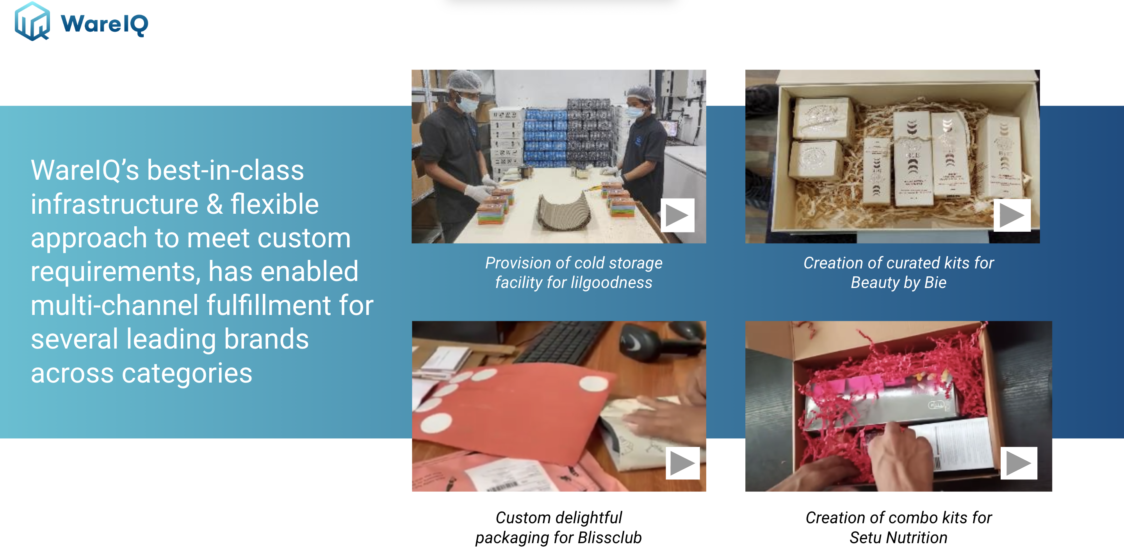What is Kitting in eCommerce? Definition, Role, Benefits and Steps Involved in Managing Kitting in Warehouses in 2024
In the eCommerce, manufacturing and retail industries, millions of raw materials, products and shipments are distributed to and from various locations every day. The logistics involved in ensuring that all these items are shipped as cost-effectively and efficiently as possible is immense. It is in every business’s best interest to identify ways to reduce their logistics costs and reduce shipping costs and this can usually be done by optimising the amount of space each parcel takes up. One fool-proof way of ensuring this happens is by implementing kitting.
This enables multiple items to be shipped together in one large consignment, reducing the space it takes up in transit and also the number of trips needed to eventually ship each item. In practice, it is just as efficient as it sounds and it helps sellers, suppliers and manufacturers alike ship large amounts of goods with ease. In this blog, we will get into the nuances of kitting, including its definition, its role in different business facets, its benefits, and the steps involved in managing the kitting process.
What is Meant by Kitting?
Kitting refers to the process of grouping and packaging components or subassemblies together to create a final product or kit. This is often used in manufacturing, assembly, or distribution operations, where multiple items are required to complete a single task or project. A kit may consist of raw materials, parts, tools, instructions or any combination of these items that are required to complete a specific task. The components are pre-selected, packaged, and labeled to ensure that everything required is included in one convenient package.
This helps to streamline the production process and minimise the need for separate ordering and handling of individual components. Kitting can be done manually or with automated processes such as pick-to-light or barcode scanning systems. The goal of kitting is to save time and improve efficiency by reducing the number of steps involved in picking and packaging components and in mitigating the risk of missing components or incorrect assembly.
What are the General Components of a Kit in eCommerce?
The components in a kit in eCommerce can vary depending on the specific kit and the industry it is being used in. Some common components that are often included in kits in eCommerce include:
- Products: The primary components of a kit, which can include physical items such as hardware, electronics, toys, or clothing, as well as digital items like software or online services.
- Packaging: Kits often include packaging to protect and organize the components, such as a box, bag, or other containers.
- Instructions: Kits may include instructions or documentation to help customers understand how to use or assemble the components.
- Accessories: Kits can also include additional accessories, such as adapters, cables, or batteries, that are needed to use or complete the components.
- Marketing materials: Kits may include promotional or marketing materials, such as flyers, posters, or stickers, to help market the kit and its components.
WareIQ, an eCommerce fulfillment company, empowers online brands with a superior-tech platform to compete with Amazon like service levels by bringing their average delivery timelines from 5-10 days to 1-2 days.
The Primary Roles of Kitting in 2023
In Warehousing
Kitting is widely used in warehouses as a means to streamline order fulfillment and improve the accuracy of picking and shipping processes. The goal of kitting in a warehouse is to simplify the process of gathering, packaging and shipping multiple items as one unit, thereby reducing the number of individual picking operations required to complete an order. Overall, kitting in a warehouse can improve the efficiency of order fulfillment, reduce the risk of errors, and streamline the supply chain. Here’s how kitting is typically used in warehouses:
- Pre-Assembly: Components are pre-assembled in a warehouse to create a complete kit. This can include items such as hardware, tools, instructions, or packaging materials. The kit is then packaged and labelled to ensure everything required is included in one convenient package.
- Picking and Packaging: Kits are picked and packaged according to the specific requirements of each order. This can involve the use of automated systems such as barcode scanning or pick-to-light systems to ensure accuracy and efficiency.
- Shipping: The completed kits are then shipped to customers or other warehouses as required. Shipping kits instead of individual components help to reduce the number of shipments required, which ultimately lowers shipping costs and improves delivery times.
In Inventory Management
Kitting plays an important role in inventory management by simplifying the tracking and management of multiple items that are used together in a specific product or process. The goal of kitting in inventory management is to reduce the number of separate items that need to be tracked, making it easier to manage stock levels and ensure that the right components are available when needed. Kitting in inventory management helps to simplify the tracking and management of components, limit the risk of stockouts and improve the effectiveness of order fulfillment. Here’s how kitting is typically used in inventory management:
- Kit Creation: A kit is created by grouping multiple items together that are commonly used together in a specific process or product. This can include raw materials, parts, tools, instructions, or any other item that is required to complete a specific task. The kit is then labelled and tracked as a single item in the inventory management system.
- Inventory Tracking: With kitting, inventory management becomes simpler as the number of separate items that need to be tracked is reduced. This can make it easier to manage stock levels, ensuring that the right components are available when needed.
- Stock Reordering: Inventory management systems can automatically trigger stock reorders when the levels of components in a kit fall below a predetermined threshold. This helps to ensure that the right components are available when needed, reducing the risk of stockouts and improving customer satisfaction.
In Manufacturing
Kitting is a widely used practice in manufacturing to streamline the assembly process and improve the accuracy and efficiency of product production. The goal of kitting in manufacturing is to simplify the process of gathering and packaging multiple components that are required to produce a single product. Kitting in the manufacturing industry can improve the efficiency and accuracy of product production, thus reducing the risk of errors and simplifying inventory management. Here’s how kitting is typically used in manufacturing:
- Consolidation of Raw Materials: Components and raw materials are pre-assembled in a manufacturing facility to create a complete kit. This can include items such as parts, tools, machinery and everything else needed to create the finished product. The kit is then packaged and labelled to ensure that everything required is included in one convenient package.
- Assembly Line: The components of a kit are placed on an assembly line to produce the final product. The use of kitting helps to simplify the assembly process and mitigate the risk of mistakes, mishaps and inefficient practices.
- Quality Control: Kitting can also help to improve the accuracy and consistency of product production by ensuring that all required components are included in each kit. This can help to reduce the risk of quality issues and improve customer satisfaction.
Benefits of Kitting for Retail Businesses
Improves Efficiency
Kitting streamlines the process of assembling products by pre-grouping all the necessary components into one kit. This saves time and mitigates the risk of errors, since all the required parts are readily available and can be easily assembled together. This ensures streamlining and optimization of various processes such as manufacturing, order fulfillment, transportation and more.
Suggested Read: How to Streamline Shipping Processes for eCommerce Sellers in 2023?
Increases Productivity
By reducing the amount of time spent searching for parts and gathering materials, kitting can significantly increase productivity. Assemblers can focus on their main task, knowing that the necessary components are all in one place. Additionally, because every important element is pre-packaged and bundled together in a single kit, it prevents the need to have multiple shipments and journeys for multiple products.
Reduces Costs
Kitting can help reduce costs associated with inventory management, such as carrying costs and obsolescence costs. By grouping components together, kitting allows companies to reduce the number of individual items they need to keep in stock, thus reducing the amount of money they need to spend on inventory management. It also requires fewer consignments to be dispatched, reducing transit and storage costs as well, saving the business a significant amount of funds in the process.
Enhances Inventory Control
Kitting makes it easier to track inventory levels, since all the components of a kit can be easily accounted for because they are bundled together in a single shipment. This helps companies maintain accurate inventory levels and reduces the risk of stockouts. Furthermore, kitting necessitates that products of a similar nature and end goal are stored together, making inventory storage more organised.
Amplifies Customer Satisfaction
Kitting can help improve customer satisfaction by providing complete, ready-to-use products that meet their specific needs. Customers are able to receive their products quickly and efficiently, without having to worry about missing parts or assembly errors. Thus, it provides a significant increase in quality and speed by which orders are delivered to their respective customers, enabling an overall better experience.
How to Manage the Inventory Kitting Process in Warehousing in 2023?
8 steps involved in the inventory kitting process are mentioned below:
Accurately Define the Kit
The first step in managing the kitting process is to define the kit by determining which components or parts are needed to create a complete, ready-to-use product. This includes identifying the specific items that should be included within each kit, as well as the quantities needed.
Ascertain the Components in the Kit
The next step is to determine the components that will be included in each kit. This may involve reviewing product specifications, working with suppliers to obtain components, or creating custom components to ensure that every kit has the required elements necessary to complete the intended task.
Gauge the Required Inventory Levels
Once the components have been determined, it is important to plan the inventory levels of each component. This involves determining how many kits can be made with the available components and determining how many components will be needed to meet demand. Therefore, inventory levels need to be adjusted accordingly.
Efficiently Assemble the Kits
After planning the inventory levels, the next step is to assemble the kits. This involves physically grouping the components together and preparing the kits for shipment. This requires an efficient and standardized assembly process to increase efficiency, reduce unwanted errors and save time.
Securely Store the Kits
The assembled kits need to be placed in a safe and secure environment until they are ready to be shipped. This may involve using warehouse space or using off-site storage if space is limited. Determine the best possible conditions depending on the nature of the contents of the kit.
Track Inventory Needed for the Kit
It is important to track the inventory levels of the kits to ensure that there is always enough stock to meet demand. This can be achieved using a variety of tools, including barcode scanning, software systems or manual methods. High-end inventory management software can automatically keep you aware of your inventory levels in real-time.
Consistently Monitor the Quality of the Kit
To ensure that the kits are of the highest quality, it is important to regularly monitor their quality and address any issues that arise. This may involve conducting quality control inspections or working with suppliers to resolve any quality issues. This will help you identify any bottlenecks or processes that need to be improved or removed entirely.
Update Components of the Kit as is Required
The components of a kit may change over time, so it is important to regularly review and update the components as needed. This may involve working with suppliers to obtain new or improved components or creating custom components as needed. This will help your kits stay relevant and up-to-date with your business objectives.
Conclusion: Leverage the Use of Kitting With WareIQ
Kitting can be beneficial to retailers in a number of ways. It helps to streamline various important procedures, reduces the time taken to complete them and lowers the expenses associated with product manufacturing, storage and distribution. It is also not very difficult to implement as it just entails multiple items of a similar nature or with a common end goal to be placed together in a single consignment.
Therefore, if your business needs to streamline its distribution procedures and reduce costs, kitting can be a good place to start to achieve this goal. Additionally, if you do not have the available manpower and resources to handle kitting on your own, you can always offload it and multiple other logistics and shipping procedures to a 3PL fulfillment company like WareIQ.
WareIQ is one of India’s leading 3PL fulfillment companies. Having been founded in 2019, it has come to offer many solutions for a vast variety of business tasks, such as order fulfillment, inventory management, product storage, last-mile delivery and much more.

We provide a vast number of kitting and packaging services, some of which are listed below:
- Product Bunding: We enable you to bundle your products based on common characteristics and objectives
- Customized Packaging and Shipping Labelling: We provide eCommerce custom packaging and labeling services that can be tailored to your requirements
- Built-to-Order Services: We assist you with preparing orders only after they come in to save you effort and resources
- Quality-Control Testing: We offer comprehensive quality checks to ensure that all your processes are upto speed
- Product Assembly: We provide the tools necessary to assemble products for various tasks
- Customizable Notes: We enable you to write personalised notes to your customers in every kit
- Greeting Cards: We provide greeting card services to ensure your customers are kept engaged as soon as they purchase

















